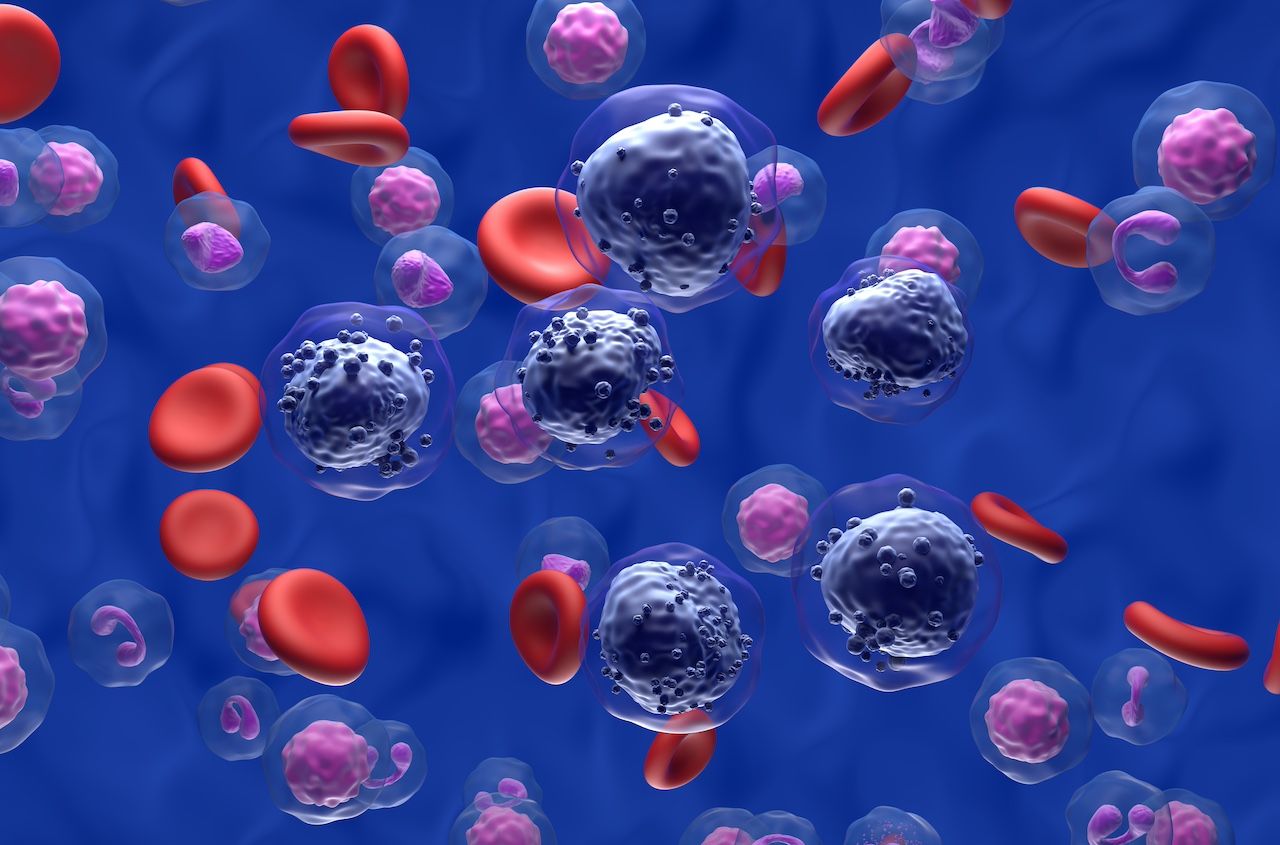- Center on Health Equity & Access
- Clinical
- Health Care Cost
- Health Care Delivery
- Insurance
- Policy
- Technology
- Value-Based Care
CPX-351 Effective in AML, Possibly With Reduced Cardiotoxicity vs Standard Anthracyclines
Liposomal daunorubicin and cytarabine (CPX-351) was effective in relapsed acute myeloid leukemia, but long-term follow-up is needed to determine the extent of the agent's cardiotoxicity.
In a study of 25 patients with relapsed acute myeloid leukemia (AML) who underwent CPX-351 therapy, left ventricular ejection fraction (LVEF) decreased, troponin (cTnT) increased, and N-terminal pro-B-type natriuretic peptide (NT-proBNP) did not change, according to a study in Frontiers in Cardiovascular Medicine.1
“While we know that cardiovascular dysfunction is a common complication of frontline therapy in children with AML, our study is the first to describe its high prevalence in children with relapsed AML, even prior to salvage therapy,” study author Kasey Leger, MD, attending physician, Cancer and Blood Disorders Center at the Seattle Children’s Hospital, wrote in an email to The American Journal of Managed Care® (AJMC®).
CPX-351 helps limit drug-induced cardiac injury by offering liposomal encapsulation of anthracyclines, which can reduce drug flow through tight capillary junctions of the heart and into the cardiac tissue. | Image credit: Laszlo - stock.adobe.com

Anthracyclines are effective in treating AML but are associated with cardiotoxicity. Left ventricular systolic dysfunction is common in AML patients who undergo this treatment, with 12% of patients exhibiting the condition at the end of therapy, and nearly 20% within 3.5 years after completion of therapy, according to the study. Among childhood AML survivors who received high dose anthracycline therapy, up to 27% exhibit late cardiomyopathy 15 years after their initial diagnosis, the authors stated.
"CPX-351 is a liposomal formulation of daunorubicin and cytarabine maintained at a 1:5 molar ratio that demonstrates prolonged exposures compared with free drug," the study authors wrote. "This agent has demonstrated safety and superior efficacy in adult patients with newly diagnosed secondary AML. While early studies in adults indicate reduced cardiotoxicity of CPX-351 compared to standard daunorubicin, there are limited pediatric data regarding the cardiotoxic profile of CPX-351."
In the phase 1/2 Children's Oncology Group study, participants aged 21 years or younger received 135 units/m2 of CPX-351 on days 1, 3, and 5 of a cycle lasting 29 days, plus or minus 1 week. Researchers performed echocardiograms and measured high-sensitivity troponin (hs-cTnT) and N-terminal pro-B-type natriuretic peptide (NT-proBNP) at baseline, during, and at the end of the study cycle. All participants of the single-arm study had been heavily treated with anthracyclines (median 348 mg/m2 daunorubicin equivalents).
At baseline, centrally quantitated LVEF was less than 50% in 8 of 25 subjects with a median LVEF of 53.8%. After treatment with CPX-351, LVEF declined significantly (ΔLVEF, −3.3%). Six of the 25 subjects experienced cancer therapy-related cardiac dysfunction (CTRCD), defined as a decline in LVEF between 10% and less than 50%.
All patients exhibited a modest increase in hs-cTnT at end of cycle 1 compared with baseline (baseline hs-cTnT, 7.2; ΔcTnT, 1.80, P = .03). NT-proBNP remained elevated without significant change. No significant associations were seen between NT-proBNP or cTnT levels and post-CPX-351 LVEF.
“In this single-arm study of anthracycline pre-treated children exposed to CPX-351, baseline abnormalities in cardiovascular function were prevalent,” the authors wrote. “Longer follow-up is needed to determine whether these changes result in clinically meaningful long-term decrements in cardiac function. An ongoing randomized trial of CPX-351 compared to standard anthracyclines in anthracycline naïve patients will provide further insight into the cardiac effects of CPX-351.”
CPX-351 helps limit drug-induced cardiac injury by offering liposomal encapsulation of anthracyclines, which can reduce drug flow through tight capillary junctions of the heart and into the cardiac tissue. Adult studies of liposomal daunorubicin or doxorubicin have shown a reduction in clinical and subclinical cardiac dysfunction compared with standard use of anthracycline, according to the study.
Participants were 21 years old or younger; 44% were female; 28% had undergone a prior HSCT; 68% were within 1 year of first remission. The median prior anthracycline exposure was 348 mg/m2 of daunorubicin equivalents (range, 105–444). All patients had demonstrated adequate cardiac function, defined as left ventricular fractional shortening greater than 27% and LVEF greater than 50%, and corrected QT interval less than 500 milliseconds. Children with CNS3 AML involvement were ineligible due to limited penetration of CPX-351 through the blood-brain barrier. Also excluded from the study were children with acute promyelocytic leukemia, bone marrow failure syndromes, Down syndrome, or Wilson disease.
The overall 5-year survival rate for children with AML is 65% to 70%, according to the American Cancer Society.2
The researchers are currently conducting a phase 3 randomized trial of CPX-351 in children and adolescents with de novo AML.
“This finding emphasizes the importance of protecting the heart from additional damage during treatment for AML relapse. Liposomal encapsulation of anthracycline is a strategy that has been shown to reduce the deleterious effects of anthracyclines on the heart due to its reduced penetrance into heart tissue," Leger said. "Unfortunately, while CPX-351, a liposomal anthracycline agent, was highly effective in inducing remission in children with AML treated on our trial, we observed a decline in cardiac function following CPX-351.”
References
- Leger K, Absalon M, Demissei B, et al. Global and regional burden estimation of Cardiotoxicity of CPX-351 in children and adolescents with relapsed AML: a Children's Oncology Group report. Front Cardiovasc Med. 2024. doi.org/10.3389/fcvm.2024.1347547
- Survival rates for childhood leukemias. American Cancer Society. Accessed July 9, 2024. https://seer.cancer.gov/statfacts/html/nhl.html
